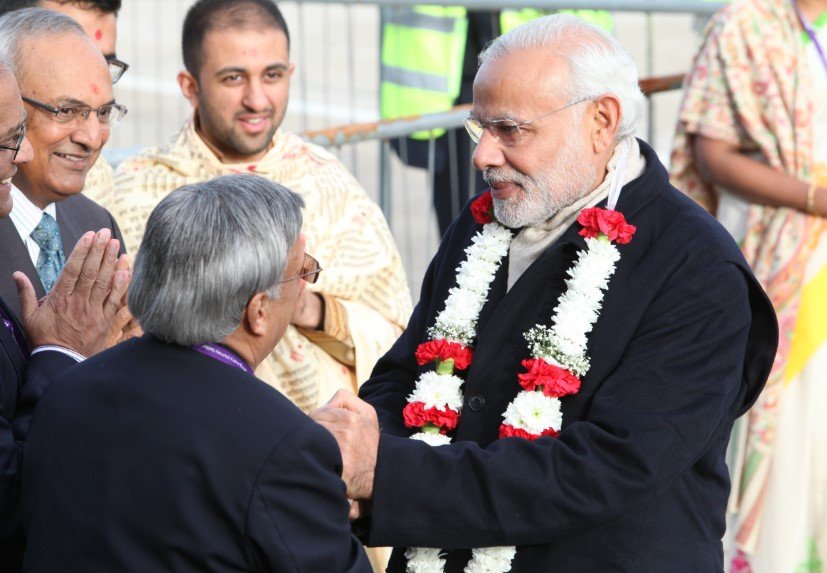Free Trade Agreement expected to reshape economic ties and boost jobs across both nations, as Modi meets Starmer and King Charles
Prime Minister Narendra Modi touched down in London on Wednesday, kicking off a tightly packed two-day trip that could rewrite the playbook on India–UK trade ties. All eyes are now on the expected signing of a long-awaited Free Trade Agreement (FTA) that officials on both sides describe as “historic.”
The FTA, years in the making, comes amid a new chapter in British politics following Keir Starmer’s rise to power earlier this month. Both sides are moving fast. The buzz is loud, the stakes are high, and the window is open — just wide enough.
An FTA years in the making — finally within reach
This isn’t the first time India and the UK have tried to hammer out a trade pact. The talks began way back in January 2022 but kept stalling — elections, economic crises, Brexit fallout, and whatnot. But Modi’s current visit is expected to change that.
Sources close to the Indian delegation say that the final text of the agreement has been prepared and reviewed. The only thing left is the formal signing, likely to happen late Wednesday night or early Thursday after Modi’s meetings with UK Prime Minister Keir Starmer and King Charles III.
A senior Indian trade official, speaking on background, put it plainly: “The politics have aligned. The economic logic was always there. It’s finally time.”

What’s in the deal for both sides?
The FTA aims to eliminate or reduce tariffs on a wide array of goods and services. Think whisky, textiles, pharma, auto parts, fintech, and digital services. It’s not just about money, either — it’s about strategy.
Let’s break down some likely key features of the deal:
-
Zero tariffs on over 90% of traded goods between the two countries within the next 7 years
-
Mutual recognition of professional qualifications in sectors like accounting, law, architecture
-
Eased visa norms for Indian professionals and students
-
Reduced duties on British alcoholic beverages, in exchange for better access for Indian textiles and pharmaceuticals
For India, the deal could mean more jobs and market access in Europe through the UK gateway. For Britain, it’s a critical post-Brexit win that shows the world it can still close meaningful trade deals outside the EU bloc.
A packed itinerary with symbolism baked in
Modi’s schedule isn’t just about business. It’s a diplomatic full-court press.
-
2.30 PM to 5.30 PM IST: Modi sits down with Keir Starmer for bilateral talks
-
6.30 PM IST: India’s Foreign Secretary Vikram Misri briefs the press
-
9 PM IST: Modi meets King Charles III at Buckingham Palace
The optics are sharp. It’s Modi’s first visit to the UK since 2018. For Starmer, it’s a chance to frame his foreign policy reset with a major democratic ally. And for King Charles, who has long championed environmental and interfaith causes, it’s a symbolic nod to continuity.
One Indian diplomat noted, “The press briefing timing tells you everything. The government expects to make an announcement before nightfall.”
Experts sense ‘fresh runway’ for innovation and jobs
Economists and policy experts are calling this agreement a timely shot in the arm.
David Lammy, the UK’s Foreign Secretary, said in an interview that the deal will “unlock a fresh runway” for innovation, defense ties, and digital trade. He pointed to the UK-India Vision 2035 as a framework to expand cooperation beyond tariffs — into cybersecurity, AI, green energy, and military tech.
Some analysts are cautious, though. “FTAs are only as good as their enforcement,” said Shruti Rajan, a London-based India-UK trade policy researcher. “We need regulatory predictability on both sides or else businesses get nervous.”
Still, optimism is running high.
India–UK trade snapshot
To get a sense of the economic stakes, here’s a quick look at the current India–UK trade relationship:
| Metric | Value (FY2024) |
|---|---|
| Total bilateral trade | $20.3 billion |
| India exports to UK | $11.7 billion |
| UK exports to India | $8.6 billion |
| UK’s investment in India | $29 billion (cumulative) |
| Indian companies operating in UK | Over 850 |
India is the UK’s 12th-largest trading partner, while Britain is India’s 18th. That’s room to grow.
What’s not in the deal?
Every deal leaves something behind. According to insiders, tricky chapters like agriculture subsidies, legal services access, and digital data localization have been set aside — for now.
And immigration? That’s still thorny. While there may be relaxed visa quotas for certain skilled professions, don’t expect wholesale liberalization. The Starmer government is already under pressure to rein in migration figures.
But trade negotiators argue that starting with what’s possible is better than aiming for a perfect — and probably impossible — deal.
Domestic political undercurrents
Back home in India, the timing is hard to ignore. Modi’s UK visit comes weeks after his third term began with a narrower mandate. Some critics back in Delhi argue this is his effort to reclaim the foreign policy spotlight and steer the narrative beyond coalition politics.
In London, Starmer too has domestic balancing to do. Labour’s base leans left on immigration but pro-trade on jobs and business. Signing this FTA is a high-wire act — one he’s betting will play well with British manufacturers and Indian diaspora voters alike.
But for both leaders, the symbolism is hard to miss. A Hindu nationalist and a centre-left reformer, shaking hands over free markets. If that doesn’t capture 2025 geopolitics, what does?
